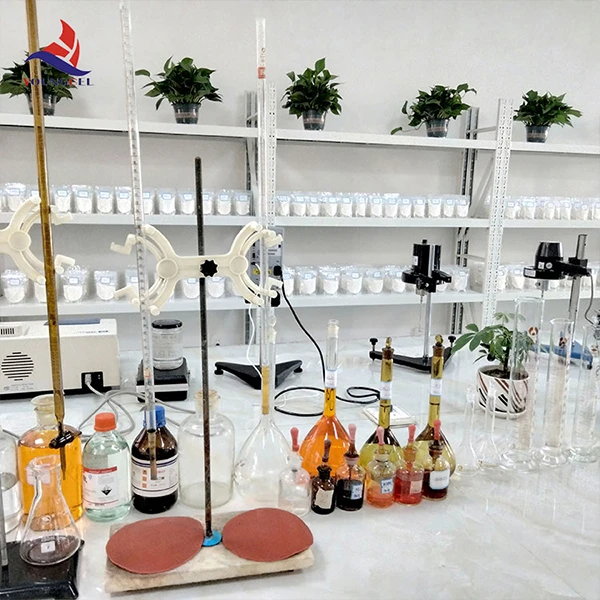The Rise of Cellulose Adhesives Eco-Friendly Solutions for Modern Applications
In an age where environmental sustainability is increasingly paramount, cellulose adhesives have emerged as a prominent solution in various industries. Derived from natural cellulose, which is the most abundant organic polymer on Earth, these adhesives offer a plethora of benefits that cater to both performance and ecological responsibility. This article explores the characteristics, advantages, and applications of cellulose adhesives, shedding light on why they are gaining traction in the modern adhesive market.
Understanding Cellulose Adhesives
Cellulose adhesives are primarily derived from the modification of cellulose, a polysaccharide that forms the structural component of plant cell walls. This renewable resource can be processed into various forms of adhesives, including films, gels, and emulsions. The versatility of cellulose allows it to be modified with different functional groups to enhance its performance. For instance, cellulose ethers, such as hydroxypropyl methylcellulose (HPMC) and carboxymethyl cellulose (CMC), are popular choices for water-soluble adhesives.
Environmental Benefits
One of the most compelling reasons for the rising popularity of cellulose adhesives is their environmental friendliness. As a biodegradable material, cellulose reduces reliance on synthetic, petroleum-based adhesives, which often contribute to pollution and long-term waste. Furthermore, cellulose can be derived from sustainable sources, such as agricultural by-products and forestry wastes, thereby promoting a circular economy. As consumers increasingly seek eco-friendly products, cellulose adhesives provide an attractive alternative that aligns with sustainable development goals.
Superior Performance Characteristics
Beyond their eco-friendly attributes, cellulose adhesives offer high performance across various applications. They exhibit strong bonding capabilities on an array of substrates, including paper, textiles, wood, and some plastics. Additionally, these adhesives can provide excellent moisture resistance when properly formulated, making them suitable for applications in varying humidity levels.
cellulose adhesive

Another advantage is their safety. Being non-toxic and free from harmful solvents, cellulose adhesives are suitable for use in industries where human exposure is a concern, such as food packaging, cosmetics, and pharmaceuticals. This safety profile is increasingly significant in a world that values health-conscious products, further enhancing the appeal of cellulose adhesives.
Diverse Applications
Cellulose adhesives have found their way into numerous applications thanks to their versatile nature. In the construction industry, they are used as wood adhesives and in insulation materials, playing a crucial role in building environmentally friendly structures. The paper and packaging sectors also benefit immensely from cellulose adhesives, utilizing them in the production of bonding agents for labels, packaging, and cartons.
In the textile industry, cellulose adhesives are used for surface coatings, offering both durability and flexibility in fabric applications. Furthermore, the automotive and aerospace industries utilize cellulose-based adhesives for lightweight components, enhancing fuel efficiency and performance without compromising safety.
Challenges and Future Directions
Despite their many advantages, cellulose adhesives face challenges, such as lower resistance to heat and moisture compared to some synthetic adhesives. Ongoing research and development are focused on overcoming these limitations through innovative formulation strategies, including cross-linking agents and nanotechnology. The future of cellulose adhesives looks promising, with increasing investment in sustainable chemistry and developmental techniques aimed at enhancing their performance capabilities.
Conclusion
Cellulose adhesives represent a significant step toward sustainability in the adhesive market. With their eco-friendly properties, impressive performance, and versatility, they are well-poised to fulfill the growing demand for environmentally responsible products. As industries continue to embrace sustainable practices, cellulose adhesives will likely play a crucial role in shaping a greener future, one bond at a time. Their ascent in various sectors illustrates the feasibility of combining high-performance requirements with ecological consideration, making them a cornerstone of modern adhesive technology.
-
Rdp Powder: Key Considerations for Wholesalers in the Building Materials IndustryNewsJul.08,2025
-
Key Considerations for Wholesalers: Navigating the World of Hpmc - Based ProductsNewsJul.08,2025
-
Hpmc Detergent: Key Considerations for WholesalersNewsJul.08,2025
-
Key Considerations for Wholesalers: China Hpmc For Tile Adhesive, Coating Additives, Concrete Additives, and MoreNewsJul.08,2025
-
Crucial Considerations for Wholesalers: Navigating the World of Construction MaterialsNewsJul.08,2025
-
Key Considerations for Wholesalers Sourcing Additive For Cement, Additive For Concrete, Additive For Putty from Additive Manufacturer Shijiazhuang Gaocheng District Yongfeng Cellulose Co., Ltd.NewsJul.08,2025




